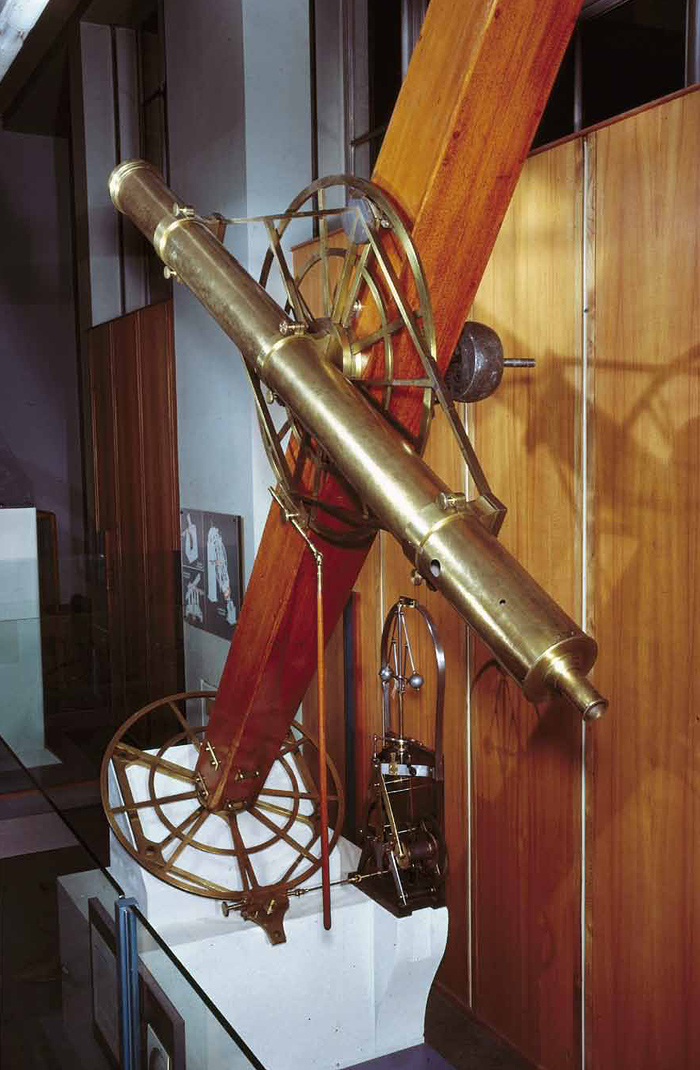HKO - Under the Same Sky 130 Years - Display Area 3
Display Area 3 : Evolution of the Observatory before WWII - Guardian of the Ocean
Display Area Introduction
With Hong Kong firmly established in its role as a transit point for shipping, the Hong Kong Observatory benefitted mariners with its early services. The Observatory commenced geomagnetic observations as early as 1884 to assist vessels in calibrating their navigation systems. The geomagnetic station was destroyed during World War II, marking the end of geomagnetic observations. In 1885, the Observatory started providing time services. To provide a time signal, a time ball would be dropped at 1 p.m. every day at the Time Ball Tower at Tsim Sha Tsui until 1933. Since 1887, the Observatory started collecting meteorological data from observation stations outside Hong Kong for compilation of pilot charts. Provision of port meteorological services commenced in 1892.
The first Time Ball Tower in Hong Kong, located at the Marine Police Headquarters of the time. In use from 1885 to 1907, it stands to this day at the junction of Canton Road and Salisbury Road, Tsim Sha Tsui.
Collection of the Hong Kong Museum of History
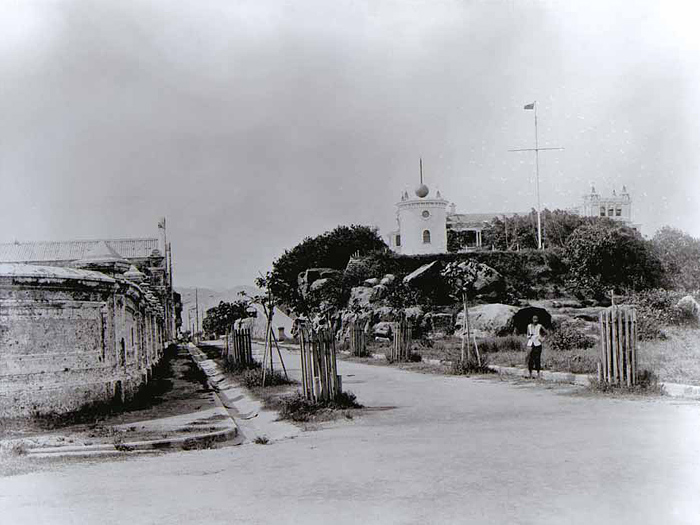
Gap Rock Lighthouse, an important outpost built in 1892 on a small island called Gap Rock. Located about 43 km to the south of Cheung Chau, it was used for navigation, meteorological observations and storm warnings. This photograph was taken circa 1911.
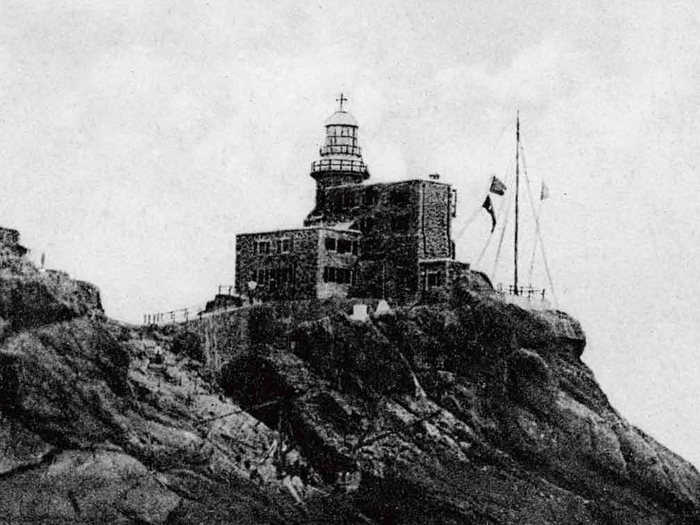
A photograph taken at the Observatory facing southwest in the early days. On the left are buildings of Knutsford Terrace. The round structure shown on the lower right was used to house the Lee Equatorial telescope. It was demolished in 1933 and the site was used to build the Director's Quarters. This photograph was taken around 1897.
Collection of the Hong Kong Museum of History
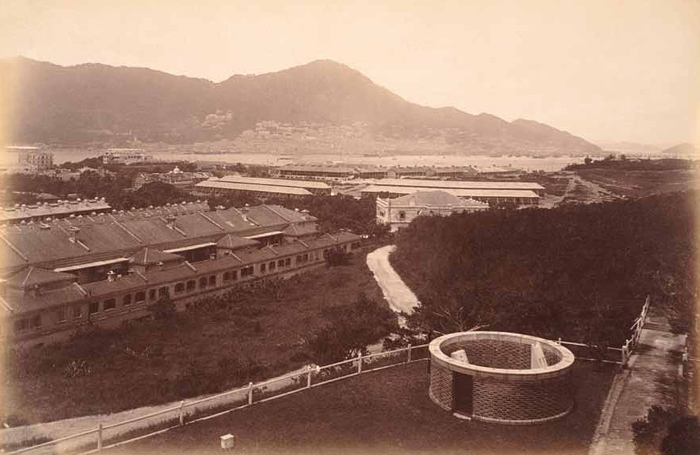
A transit telescope was used to determine local time by clocking the transit of a star across the meridian. A similar instrument had been used by the Observatory since 1885 but was removed, among other Observatory's equipment, by the Japanese army during World War II.
Photo by Science Museum/Science and Society Picture Library
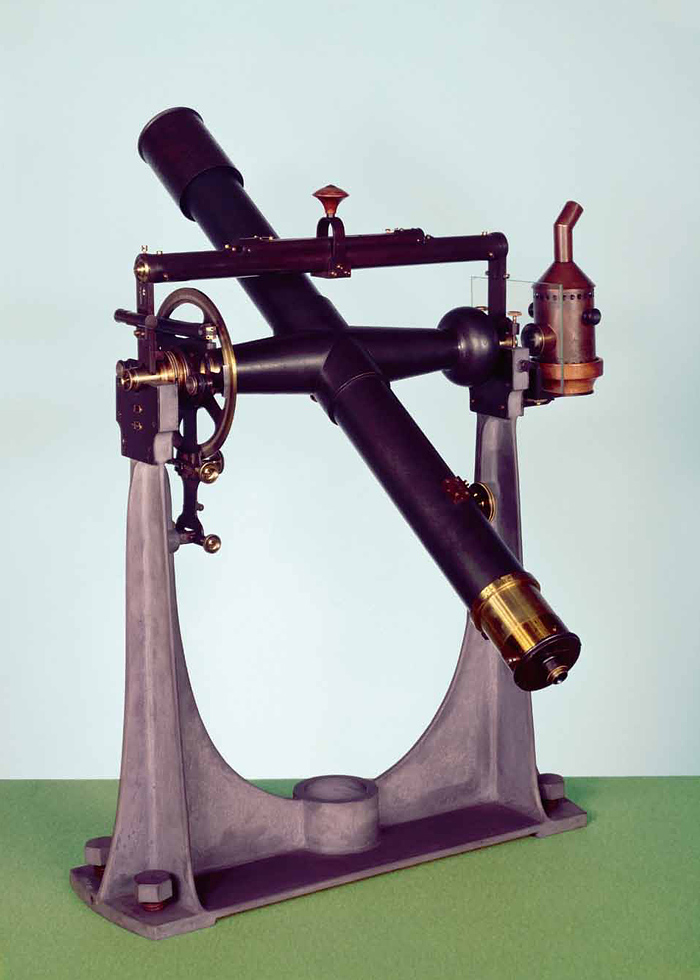
The Kew Pattern Dip Circle is an instrument for measuring magnetic dips. It had been used by the Hong Kong Observatory for regular geomagnetic measurements from 1884 until 1939 when the work was stopped by World War II.
Photo by Science Museum/Science and Society Picture Library
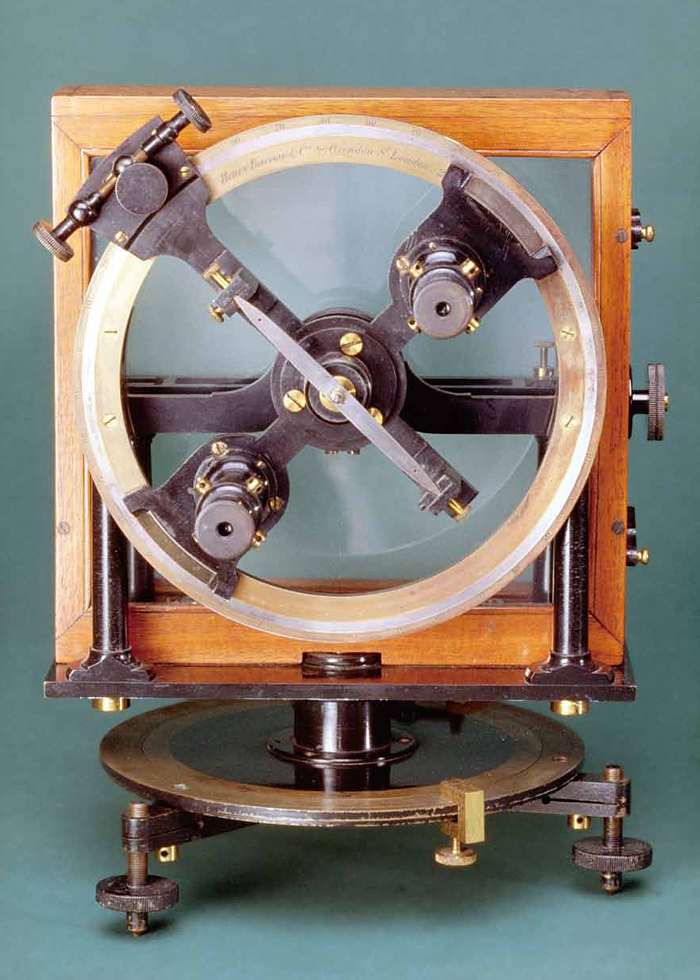
The Lee Equatorial telescope was owned by the Royal Observatory, Greenwich and transferred to the Hong Kong Observatory from 1885 to 1914 for observing astronomical objects, including Jupiter, Saturn, and Halley's Comet during its return in 1910.
Photo by Science Museum/Science and Society Picture Library
